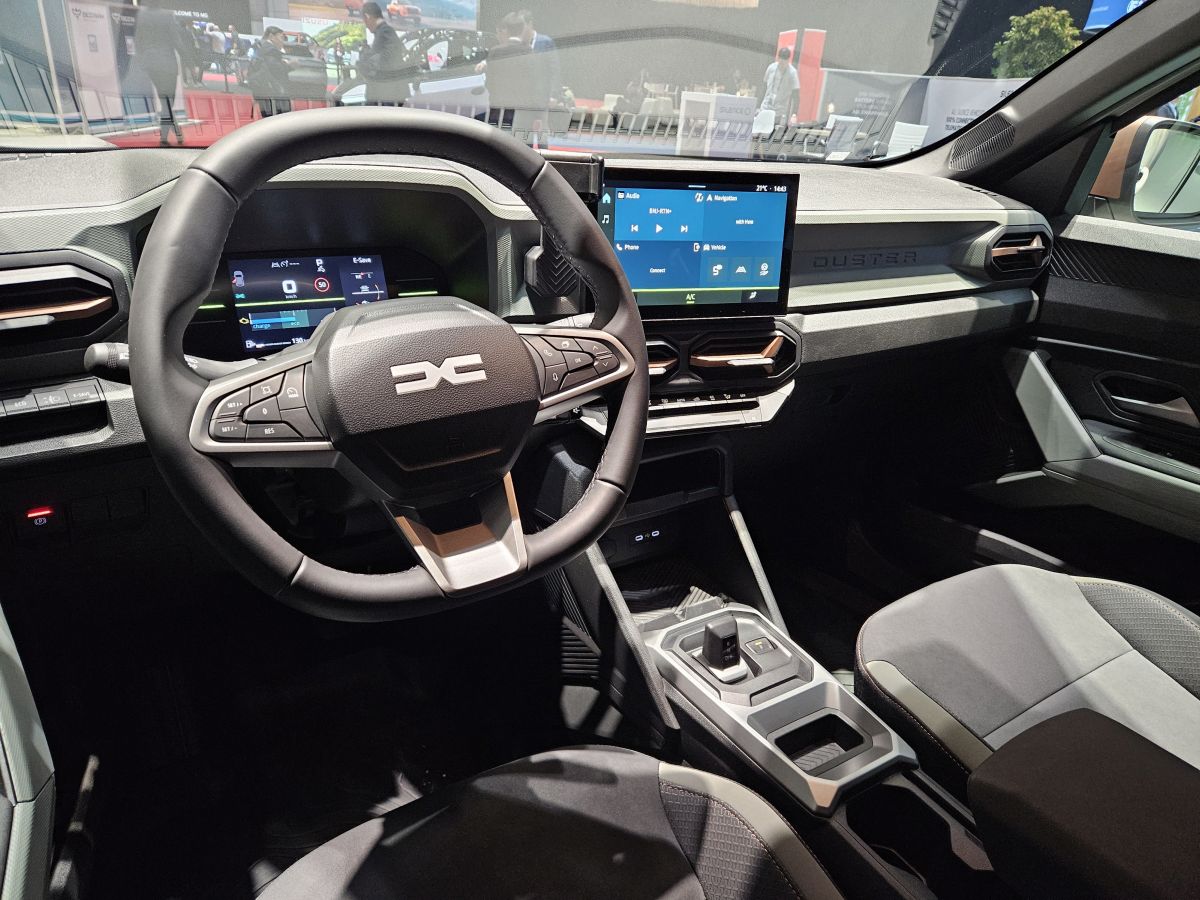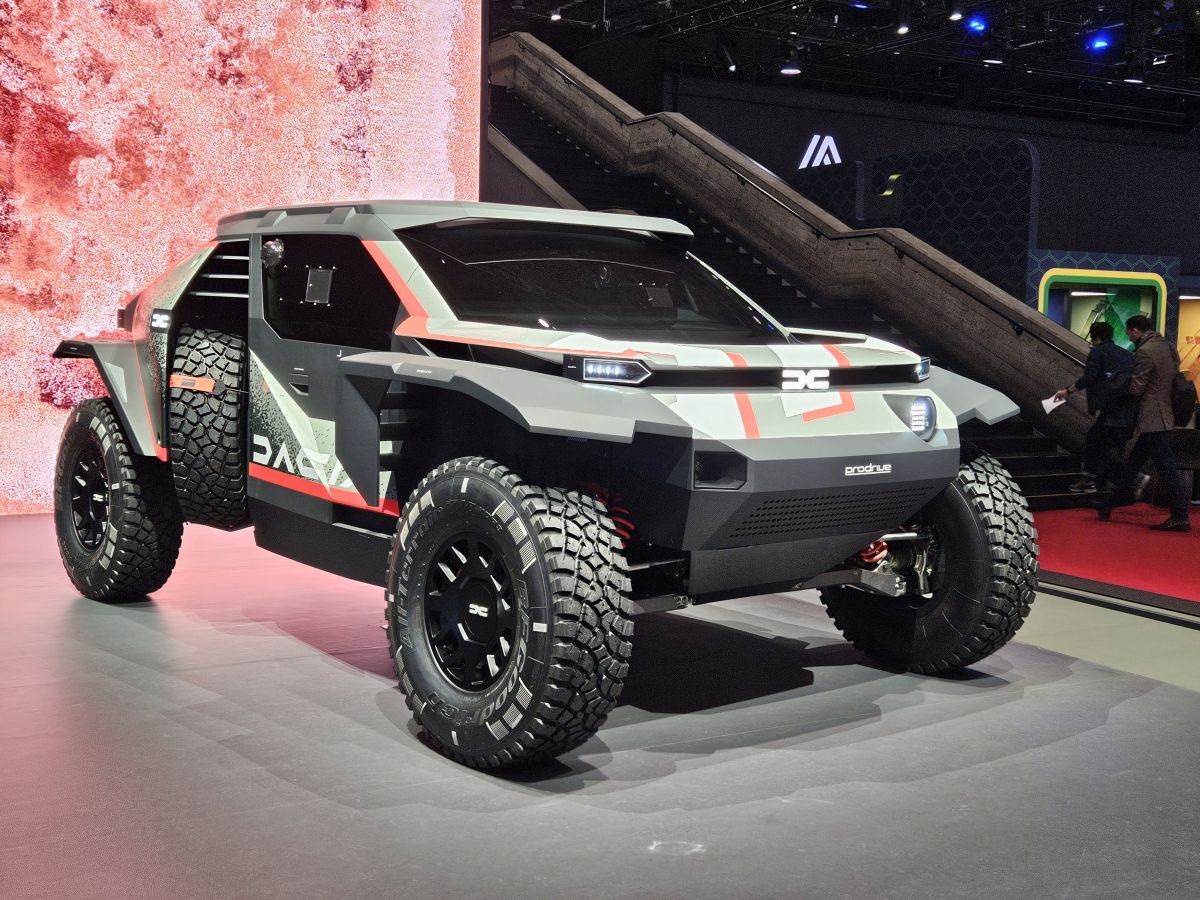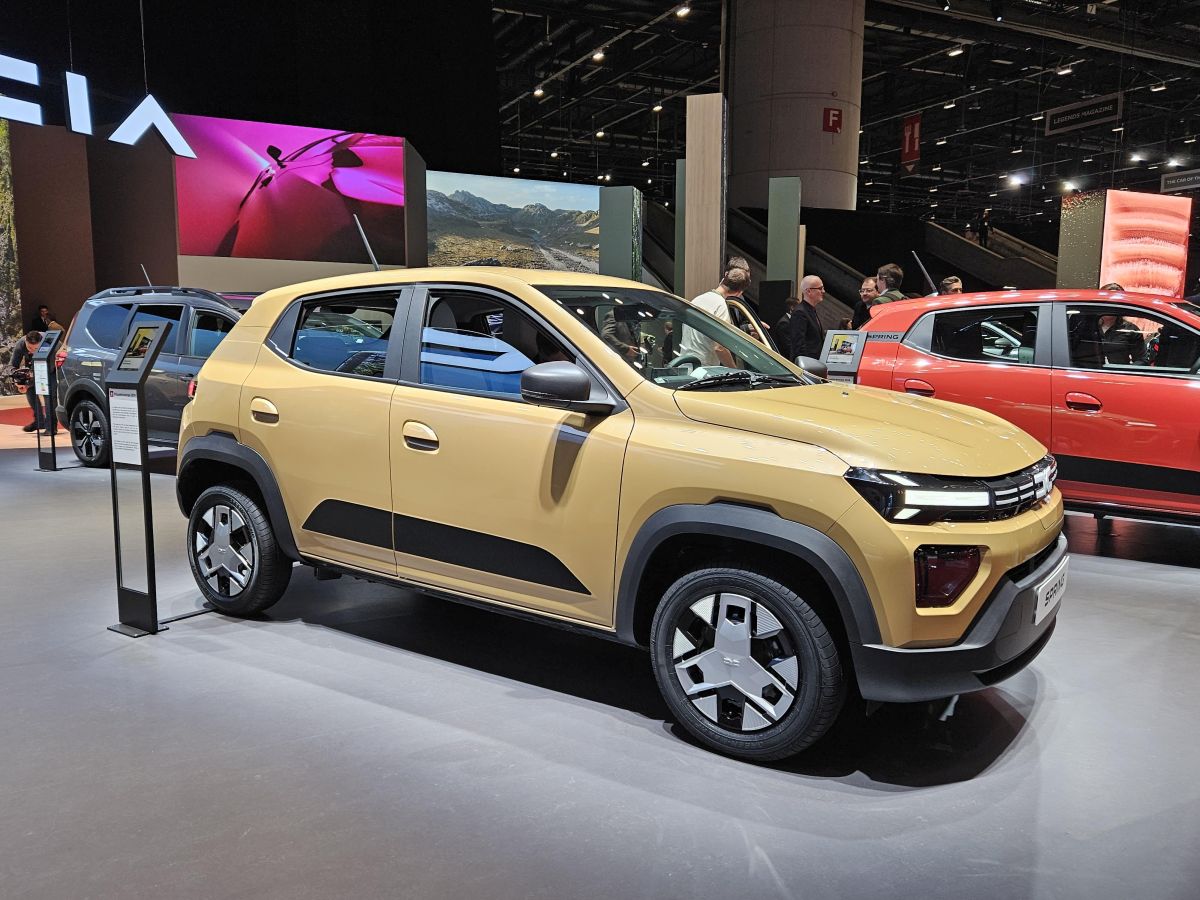
The average price of a new Dacia car is €17,500 and will increase with the launch of the Duster 3 this year and the Bigster (in 2025). Dacia will release the biggest cars in its history, but what can we expect? What is the mysterious C-Neo project? Will there be an electric Sandero in 3-4 years? What’s new in 2024?
Dacia and expansion to the C segment
A lot will change at Dacia in the coming years. In a few months, the Duster 3 and Spring facelift models will arrive in car showrooms, and the Bigster, the first Dacia with a length of 4.6 meters, will be launched next year. Duster 2 will be produced until June, and then Duster 3 will “take over”.
In 2027 or 2028, an electric version of the Sandero may also appear, but in 2026, two C-class models may enter the market, which the press of France and England wrote about in the fall of 2023.

Photo: Vlad Barza
Inside Renault, the program is known as C-Neo, and it will concern two C-Class models: a sedan and a wagon, derived from the technical platform used for the Bigster (the model due to be presented to the world in seven months in a series version).
- PHOTO Renault 5 – What one of the most interesting electric cars produced in Europe looks like and when it will arrive in Romania
These will be Dacia’s largest models to date, measuring around 4.60 meters in length, and in recent months Dacia has confirmed that they are working on new C-segment models. By comparison, the Jogger is 4.55 meters long. Duster 3 has a length of 4.34 meters, Sandero – 4.09 meters, and Spring – about 3.7 meters.

Dacia Sandrider for the Dakar Rally
It would be about this segment C, where several models have disappeared from the market, and Dacia would compete, in particular, with a car that is successful, especially in Central and Eastern Europe: the Skoda Octavia. Such a Dacia model should be several thousand euros cheaper than the Octavia.
Laurens van den Acker, Renault’s chief designer, also spoke about the “future Dacia C-Class model” in Geneva, answering questions from HotNews.ro about Renault’s design and engineering centers in Romania. He said the Romanian engineering center that worked on the Jogger and Duster 3 is also working on the Bigster as well as the “next C-segment car”.
When asked how he sees the future of the Dacia brand, the chief designer said that the aim is to extend the offer to a larger segment with the new models that are planned to be launched.

“The market that Dacia has to conquer is the C segment,” said Xavier Martinet, Dacia’s sales and marketing director, a few months ago.
Speaking to the Romanian press in Geneva, Martinet said the expansion of the Dacia brand should be straightforward and “under control”. Dacia has four base models, with a fifth, the Bigster, coming next year, giving Dacia 80% of the market, the official said.
Last year, Dacia sold more than 519,000 cars in the EU, with a market share of 4.9%. Compared to 2022, sales increased by 18%.
What’s in store for the Bigster in the C segment. Are the C-Neo rumors true?
Xavier Martine says the Sandero is selling well, more than 250,000 units a year in Europe, and the Duster is also doing great. And the Jogger was a leader in its segment.
-
PHOTO Dacia released a new Spring model – What does the restyled version of the best-selling electric car in Romania look like and what’s new
How will the Dacia range expand beyond the Bigster? A lot depends on emissions regulations, which will become tougher by 2030, and more electric cars need to be produced to meet them across the brand. The problem with them is that they are more expensive than combustion engine cars, and Dacia can’t go much higher on price.

Dacia stand at the Geneva Motor Show
And from recent statements by some Renault representatives, it has become clear that Dacia’s expansion in the C-segment with cars larger than the Duster will not be done through the launch of SUVs.
Dacia, says Martinet, should think about the evolution of SUVs outside of the SUV segment, because SUVs are currently in high demand, but SUVs have higher polluting emissions than other cars. “It’s a big question, what do we do ‘after the SUV’, after the SUV. We have to pay attention to the average emissions per vehicle and the average range.” Hybrids are not a one-size-fits-all solution, just like liquefied gas.
The average price at which a Dacia model is sold is around €17,500, which will increase after the launch of the Duster 3, and will also increase as more hybrid versions become available. However, Dacia officials say the Duster 3 price hike is justified by the new features it brings.
An interesting detail: in Romania, the best-selling new car model last year was the Logan sedan, a model that has not been sold in Western Europe for many years. However, the Dacia sedan has attracted interest from Dacia dealers in Germany, who have ordered several hundred Logan vehicles for testing, Mihai Bordianu, Dacia’s regional manager for Romania, said at the Geneva Motor Show.
Romain Gauvin, responsible for “design en avance de phase Dacia”, also spoke about the steps Dacia is making in the C segment in Geneva. He promises that we will see interesting things for Dacia in the C segment. pleasant surprises await.”
The electric Sandero may enter the market in 2027 or 2028
Already in 2027, the new generation of Sandero should enter the market, and by then the Renault group should decide whether there will be only an electric Sandero. The group plans to have more electric Renault models, while Dacia will focus on low-CO2 cars, with electrification not currently a priority after the spring.
“And Dacia will have to produce more electric cars, especially if the European target by 2035 is met. Now is not the time,” says Xavier Martine. “The Sandero was launched at the end of 2020 and the beginning of 2021, so the new generation will appear in 2027 or 2028, and I wouldn’t be surprised if there was an electric version, but until then several years, we are not announcing anything at the moment, but there must be something to cover this market segment, considering the target until 2035. We cannot not be present in this segment, especially because the Sandero is the most sought-after model at retail in Europe “, says Martinet.
He adds that Dacia can always launch new electrics because the technology exists, but the question is whether it makes sense to do so.
Here it is a matter of production cost and price. And Dacia cars have become more expensive in recent years, and if they are too expensive, they will become unattractive. We can imagine that if a pure electric Sandero existed today, it would cost over €25,000 and NOT sell well.
Duster 3 and Spring facelift, 2024 releases on Dacia
Dacia Spring will be available to buyers in Romania at the end of summer, and Duster 3 will arrive in showrooms a little earlier, that is, at the beginning of summer.
The Duster 3 will cost between €18,800 and €26,650 depending on engine and equipment. It is interesting that Duster 2 is atypical, and at the end of the generation, sales do not decrease, as happens with almost all car models on the market. “There are a lot of people in Romania who order their Duster, and in Romania we had more demand than we can produce for the old Duster. There are also people who want, for example, a diesel,” said Mihai Bordianu, Dacia’s regional manager in Romania, at the Geneva Motor Show. About the Duster 2, people interested in buying the car say, as a representative of Dacia claims, that it is a “well-made, stable and strong” model.
Dacia officials say the Spring, despite being assembled in China, should not be considered a “Chinese car” because it was built on Renault’s global technical platform, and China is clearly the best place to build an electric city that is the cheapest in the EU, 20,000 euros. Dacia officials say it wasn’t known before the Spring launch whether it would be a success, but the fact that 140,000 cars were sold in less than three years suggests it was. France, Germany, Romania and Italy are among the biggest markets.
The price of the new Spring will be announced in mid-March, and Renault representatives did not want to say whether the new Spring will be cheaper than the current one, which costs between 20,500 and 21,000 euros. The price of the base version should drop below 20,000 euros at the spring facelift.
The Bigster, a C-segment SUV that will exceed 4.6 meters in length, will hit showrooms next year, a model designed for longer roads. The serial Bigster will be presented in mid-October at the Paris Motor Show. The French press wrote that prices can start from 22,000 euros. Dacia described the Bigster as “robust, spacious and ideal for outdoor adventures”.
The Bigster will be the largest car produced by Dacia and will be produced in Mioven, with good sales expectations, especially in the German market.
Source: Hot News
Lori Barajas is an accomplished journalist, known for her insightful and thought-provoking writing on economy. She currently works as a writer at 247 news reel. With a passion for understanding the economy, Lori’s writing delves deep into the financial issues that matter most, providing readers with a unique perspective on current events.